West Burton A: Appeal to save 'carbon Stonehenge' from demolition
- Published
- comments
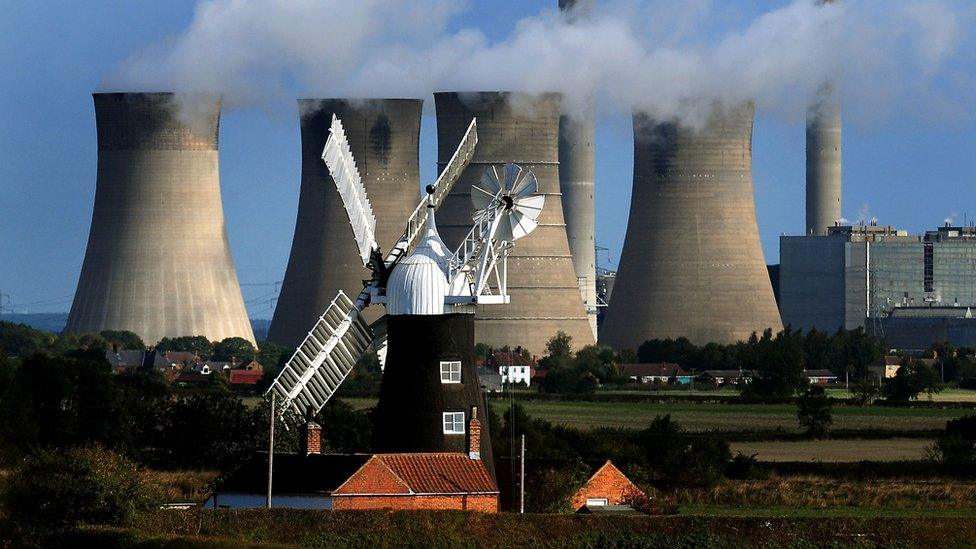
Do cooling towers deserve to be preserved - like windmills - as relics of our industrial past?
A date for the demolition of some of the UK's last cooling towers has prompted a plea about their future.
West Burton and Cottam coal-fired power stations dominated north Nottinghamshire's landscape for more than 60 years but closed in 2023 and 2019 respectively.
It has now been confirmed West Burton is due to be cleared by 2028.
Campaign group the Twentieth Century Society (TCS) said such "engineering marvels" should be preserved.
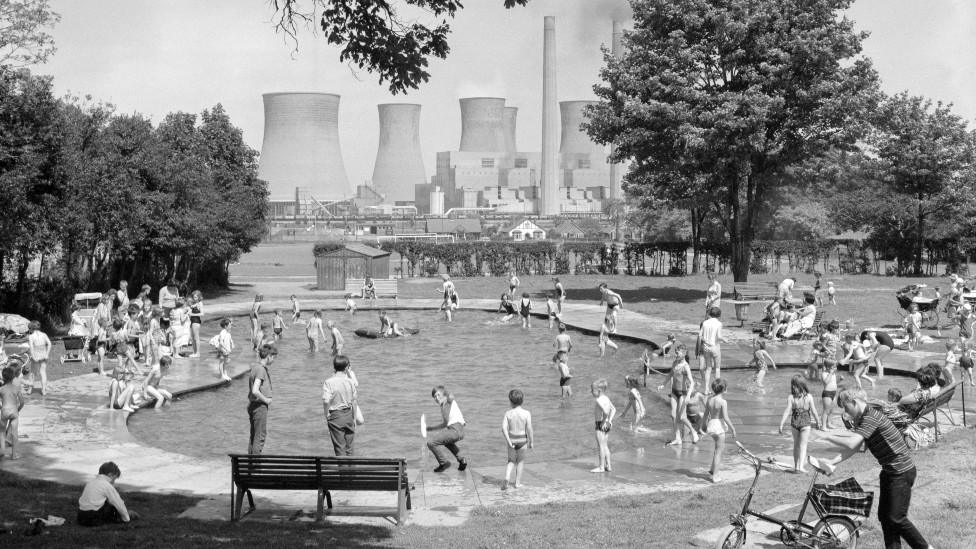
Cooling towers dominated parts of the British landscape for decades after World War Two
Built in the early 1960s, the 14 power stations of the River Trent's "Megawatt Alley" once produced about a quarter of the UK's energy needs.
Now the drive for cheaper, cleaner and more environmentally-sustainable power has led to only one still operating - at Ratcliffe upon Soar - which itself is due to shut in September.
Demolition of West Burton A - a gas-fired B station shares the site - began earlier this month with low-rise buildings known as Precipitators 3&4 being levelled, and the boiler house of Cottam went on Thursday.
The cooling towers at Cottam are due to be demolished next year.
Watch: Part of nearby Cottam power station was demolished on Thursday
But TCS, an architectural campaign group which calls for the preservation of significant modern buildings, said the beginning of demolition was a "sad milestone".
Oli Marshall, head of campaigns, said: "We're in danger of wiping out an entire chapter of our industrial heritage.
"The cooling towers of our post-war power stations are silent sculptural giants; they're an engineering marvel unlike any other man-made structure. The Stonehenge or Avebury of the carbon age."
The group said while they are large enough to fit the dome of St Paul's Cathedral, parts of the concrete shell were only six inches (15cm) thick.
It pointed out that in Germany and South Africa, redundant towers are being repurposed as the centrepiece of extreme sports and amusement parks.
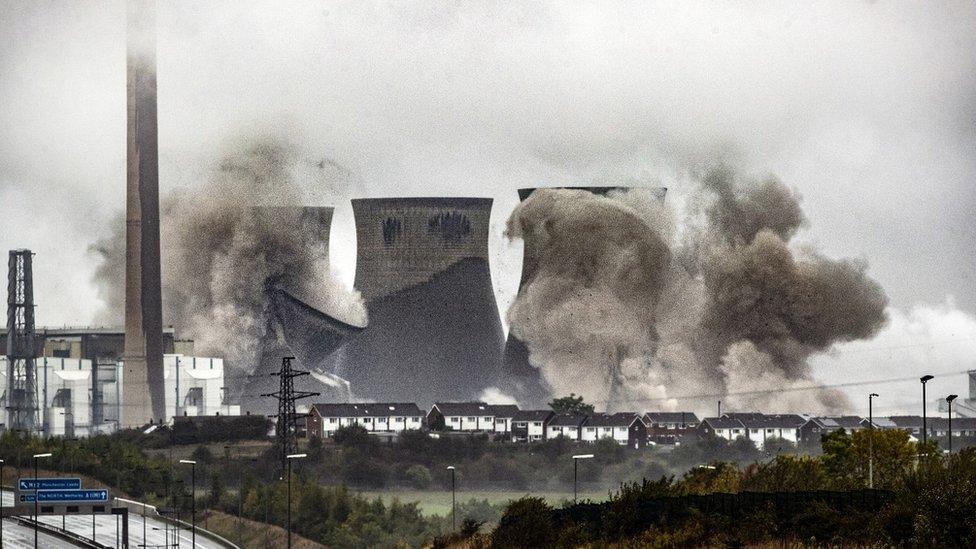
Due to steady demolitions, the number of cooling towers has gone from 250 to fewer than 50
Mr Marshall added: "The British landscape is dotted with the remnants of power and industry from previous centuries - from smock windmills and gasholders, to mill chimney stacks and bottle kilns.
"Long after the sails have stopped turning and the furnaces have been extinguished, these functional structures have gradually assumed the status of regional and national landmarks.
"The cooling towers of our post-war power stations are simply the latest example.
"At their peak in the 1960s, there were as many as 250 individual towers, now less than 50 remain.
"With five to 10 being demolished every year, they exist on borrowed time."
TCS tried to get the West Burton towers listed but instead a Certificate Of Immunity (COI) was issued, effectively blocking any attempt at preservation.
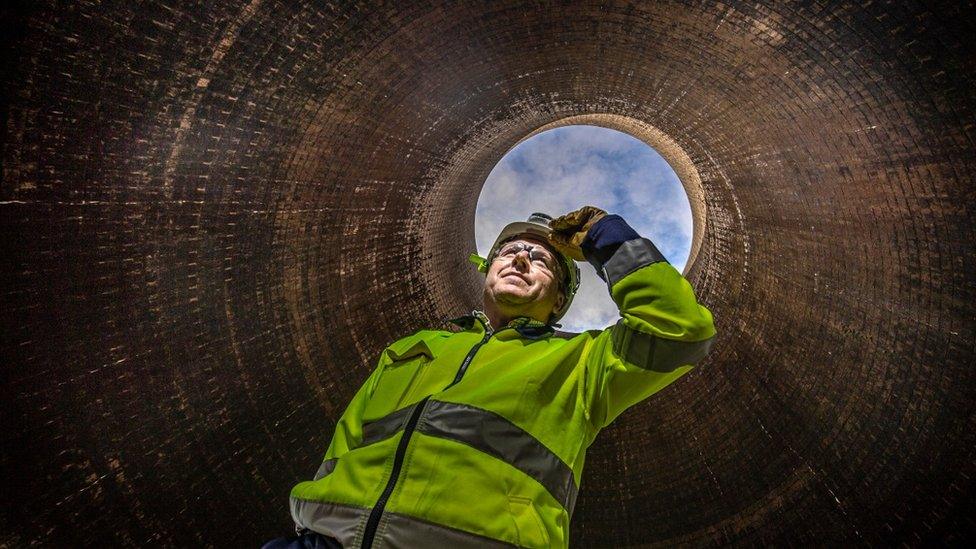
The towers are about 300ft (91m) high and in places have walls only six inches (15cm) thick
A Historic England spokesperson said: "The Certificate Of Immunity (COI) from listing was granted to West Burton Power Station in 2017, and renewed in 2022.
"We are aware of the plans for the closure of the last post-war coal-fired power stations, and in response we have implemented a detailed recording programme, and are working with the Science Museum Group to ensure the selective retention of artefacts.
"This will ensure valuable information and evidence relating to this industry is available for posterity and study by current and future generations."

Follow BBC East Midlands on Facebook, external, on X, external, or on Instagram, external. Send your story ideas to eastmidsnews@bbc.co.uk, external or via WhatsApp, external on 0808 100 2210.
- Published22 February 2024
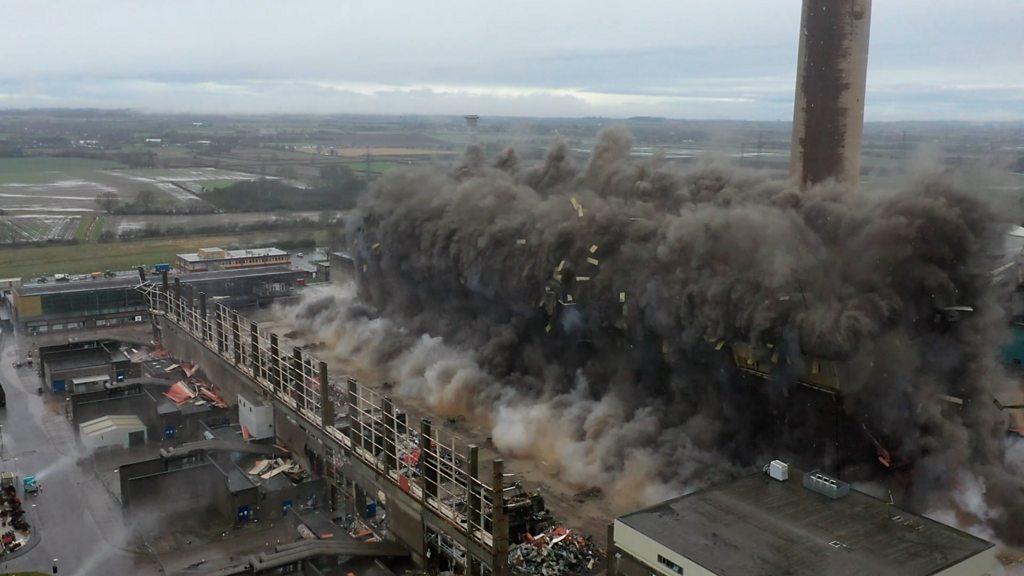
- Published3 December 2023

- Published1 April 2023
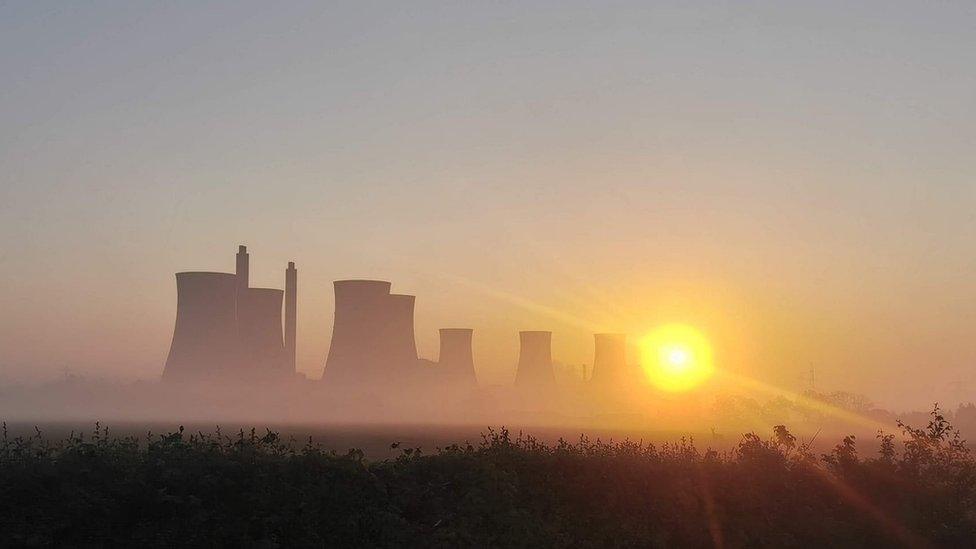
- Published7 March 2023

- Published6 October 2022
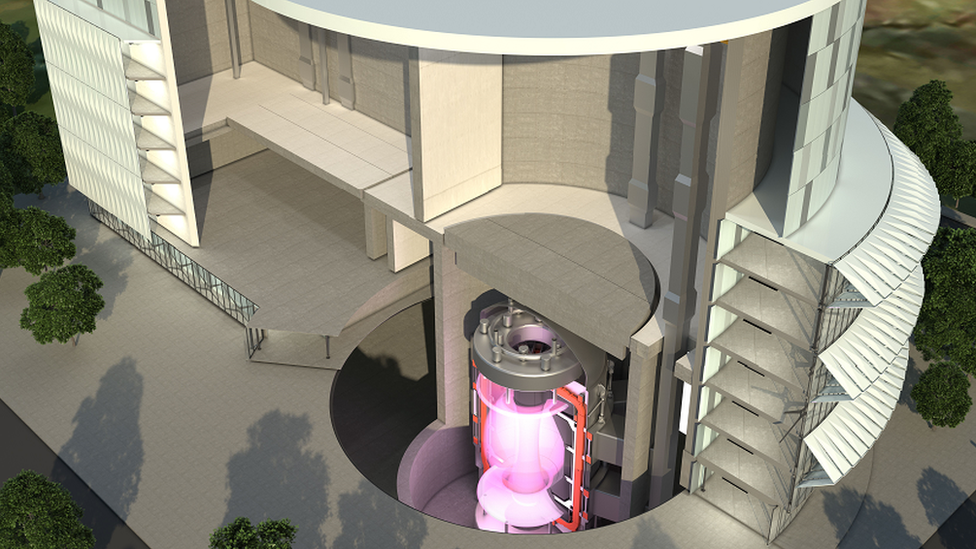
- Published19 September 2022
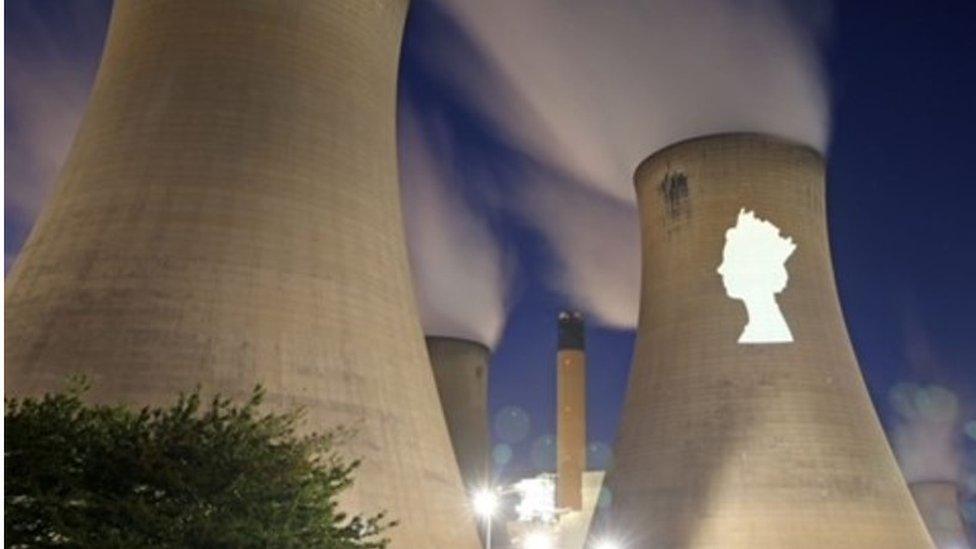
- Published18 March 2022
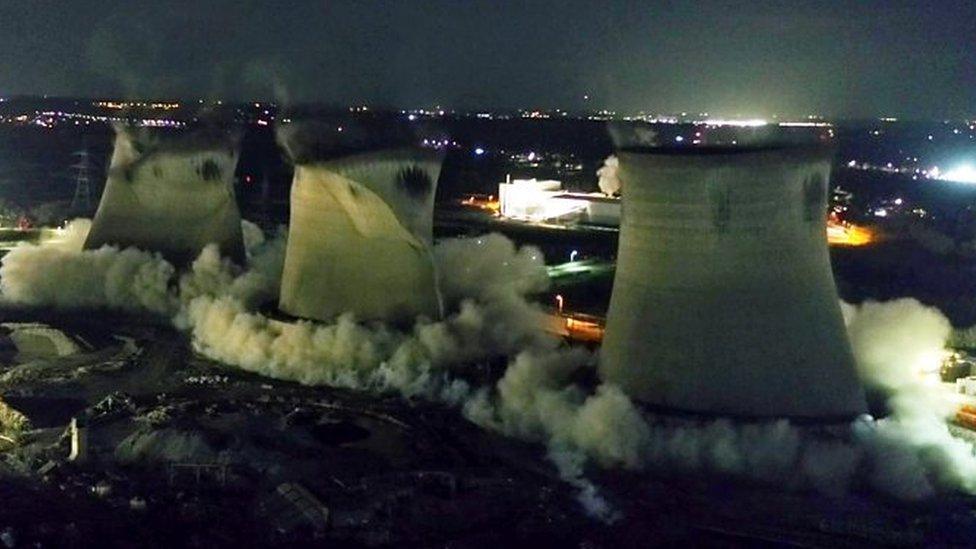
- Published3 October 2019
